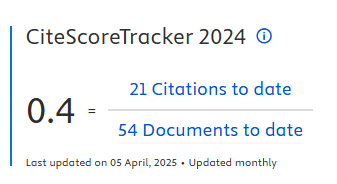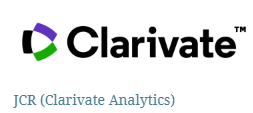Submissions
Submission Preparation Checklist
As part of the submission process, authors are required to check off their submission's compliance with all of the following items, and submissions may be returned to authors that do not adhere to these guidelines.- IJI Journal require a Contributer ID (see ORCID and Redalyc ID) for all authors. ORCID is a persistent unique identifier for researchers and functions similarly to an article’s Digital Object Identifier (DOI). ORCIDs enable accurate attribution and improved discoverability of an author’s published work. The author will need a registered ORCID in order to submit a manuscript or review a proof in this journal.
- Authors are in agreement and aware of the use of Artificial Intelligence available on the journal's website. All authors and their details must be filled out at the time of submission, as authors cannot be added after the article has been submitted.
- The author(s) ensure that the contribution is original and unpublished and is not being evaluated in other journal(s);
- The article must be presented in Microsoft Word format or RTF provided that it does not exceed 2MB;
- Foreign words should be written in italics while neologisms or unusual words should be written in quotations marks;
- In Microsoft Office documents, the author identification must be removed from the document properties (in the File > Properties menu), click the File tab on the main menu, next File > Info > Check for Issues > Inspect Document > Inspect > choose to Remove everything in the dialog box, review the results in Document Inspector and save.
- Frames, graphs, tables or illustrations shall be submitted with their captions, quoting the source and legend;
- Units of measure shall follow the standards of the International System (SI) developed by the International Bureau of Weights and Measures (BIPM) [www.bipm.org];
- By being responsible for the content of the article submitted to the journal, the author authorizes its publication.
-
CRediT: It is obligatory sending the Authors’ contributions in a Supplementary file, if the article was submitted after February 21, 2022. Before this date, all information will be requested in Copyediting Review – which precedes the final publication. The table with information can be copied in the end Authorship Policy. click here
Copyright Notice
Authors who publish with this journal agree to the following terms:
The author(s) authorize the publication of the article in the journal.
The author(s) ensure that the contribution is original and unpublished and is not being evaluated in other journal(s).
The journal is not responsible for the opinions, ideas and concepts expressed in the texts because they are the sole responsibility of the author(s).
The publishers reserve the right to make adjustments and textual adaptation to the norms of APA.
Authors retain copyright and grant the journal right of first publication, with the work after publication simultaneously licensed under a Creative Commons Attribution License that allows others to share the work with an acknowledgement of the work's authorship and initial publication in this journal.
Authors are able to enter into separate, additional contractual arrangements for the non-exclusive distribution of the journal's published version of the work (e.g., post it to an institutional repository or publish it in a book), with an acknowledgement of its initial publication in this journal.
Authors are permitted and encouraged to post their work online (e.g., in institutional repositories or on their website) prior to and during the submission process, as it can lead to productive exchanges, as well as earlier and greater citation of published work (See The Effect of Open Access) at http://opcit.eprints.org/oacitation-biblio.html
Authors are able to use ORCID is a system of identification for authors. An ORCID identifier is unique to an individual and acts as a persistent digital identifier to ensure that authors (particularly those with relatively common names) can be distinguished and their work properly attributed.






